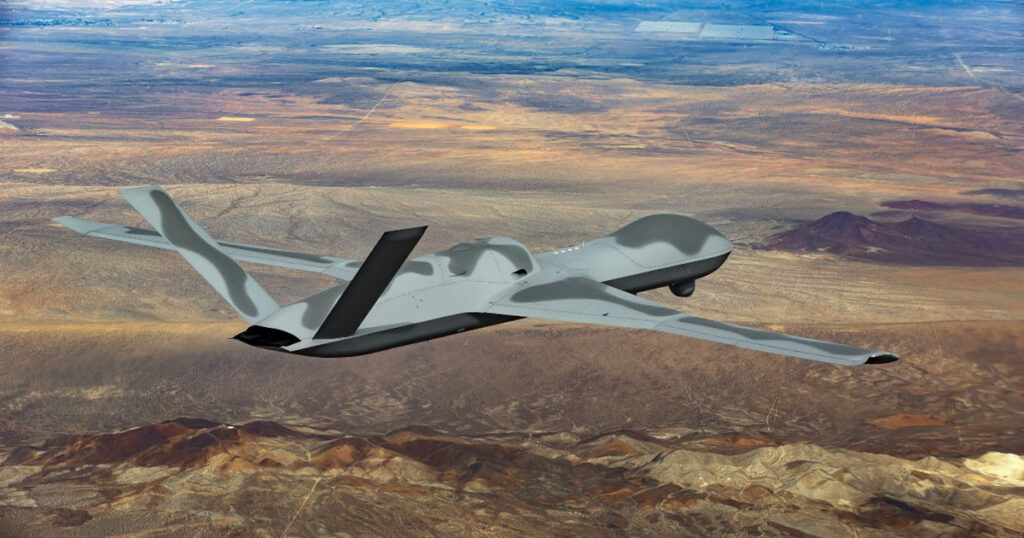GA-ASI Demos Autonomy for UCAV Using MQ-20 and Waveform X
GA-ASI Combines Waveform X Capabilities With Diverse DoD Autonomy Skills Providers to Advance Its UCAV Ecosystem
SAN DIEGO, January 16. General Atomics Aeronautical Systems, Inc. (GA-ASI) demonstrated its hardware-agnostic, open standards-based autonomy ecosystem for Unmanned Combat Air Vehicles (UCAVs) on a GA-ASI MQ-20 Avenger® as part of a live flight test on Nov. 13, 2023. The flight included three software-defined radios (SDRs) from L3Harris Technologies to support Line-of-Sight (LOS), command and control, and data movement capabilities via Waveform X.

One SDR, an L3Harris’ Pantera, was integrated into the MQ-20 unmanned aircraft, and a second was on the ground working in concert with a third L3Harris SDR, BANSHEE 2, which was on the ground as part of the Mission Control Element, forming an IP-based Mesh Network. The demonstration showcased Waveform X, a non-proprietary U.S. government-owned communications capability, and the ability to fly, flip, fly flight hardware as part of the Open Mission Systems (OMS) and skills based unmanned autonomy ecosystem.
The flight demonstrated the ability to rapidly plug and play both U.S. Navy and U.S. Air Force (USAF) autonomous unmanned technologies together. It further leveraged autonomy from three separate sources: government-provided human-machine interface (HMI) hardware, GA-ASI’s autonomy core, and orchestration of these components using Waveform X.
Autonomy skills were used to meet multiple objectives for collaborative combat missions and close the Find, Fix, Track, Target, Engage, and Assess (F2T2EA) engagement chain using a mix of Live, Virtual, and Constructive (LVC) entities. The flight, which took place at GA-ASI’s Desert Horizon Flight Operations Facility in El Mirage, Calif., illustrates the company’s commitment to maturing future Autonomous Collaborative Platform (ACP) technologies using the MQ-20 as a flying test bed.
“This flight underscores GA-ASI’s commitment to proving combat operational readiness for defense contractor products such as L3Harris’ Pantera and BANSHEE 2 radios, as well as open, vendor-agnostic autonomy architecture for UCAV platforms,” said GA-ASI Vice President of Advanced Programs Michael Atwood. “This most recent test shows multi-service compatibility of the autonomy core through the integration of USAF and Navy software skills, bringing us one step closer to government-owned, skills based interservice ecosystem for ACPs.”
Another important goal of GA-ASI’s flights is to demonstrate the company’s commitment to developing an open government standards-based autonomy ecosystem that enables rapid integration and validation of third-party tactical software applications. GA-ASI is focused on supporting the emerging government-managed App Store-based model that allows organizations to rapidly develop and deploy software while maintaining safety of flight and ensuring warfighters have up-to-date access to the industry’s best capabilities.





